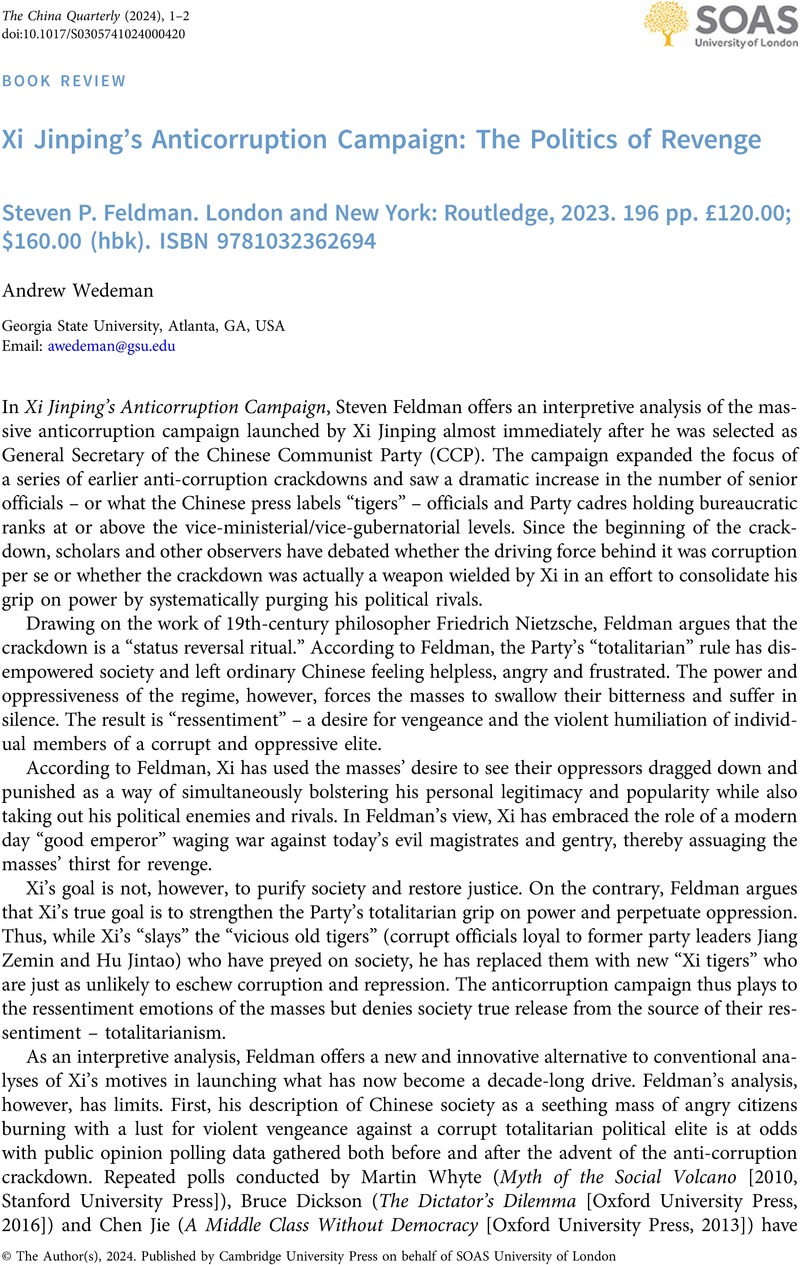No CrossRef data available.
Article contents
Xi Jinping's Anticorruption Campaign: The Politics of Revenge Steven P. Feldman. London and New York: Routledge, 2023. 196 pp. £120.00; $160.00 (hbk). ISBN 9781032362694
Review products
Xi Jinping's Anticorruption Campaign: The Politics of Revenge Steven P. Feldman. London and New York: Routledge, 2023. 196 pp. £120.00; $160.00 (hbk). ISBN 9781032362694
Published online by Cambridge University Press: 16 April 2024
Abstract
An abstract is not available for this content so a preview has been provided. Please use the Get access link above for information on how to access this content.

- Type
- Book Review
- Information
- Copyright
- Copyright © The Author(s), 2024. Published by Cambridge University Press on behalf of SOAS University of London



